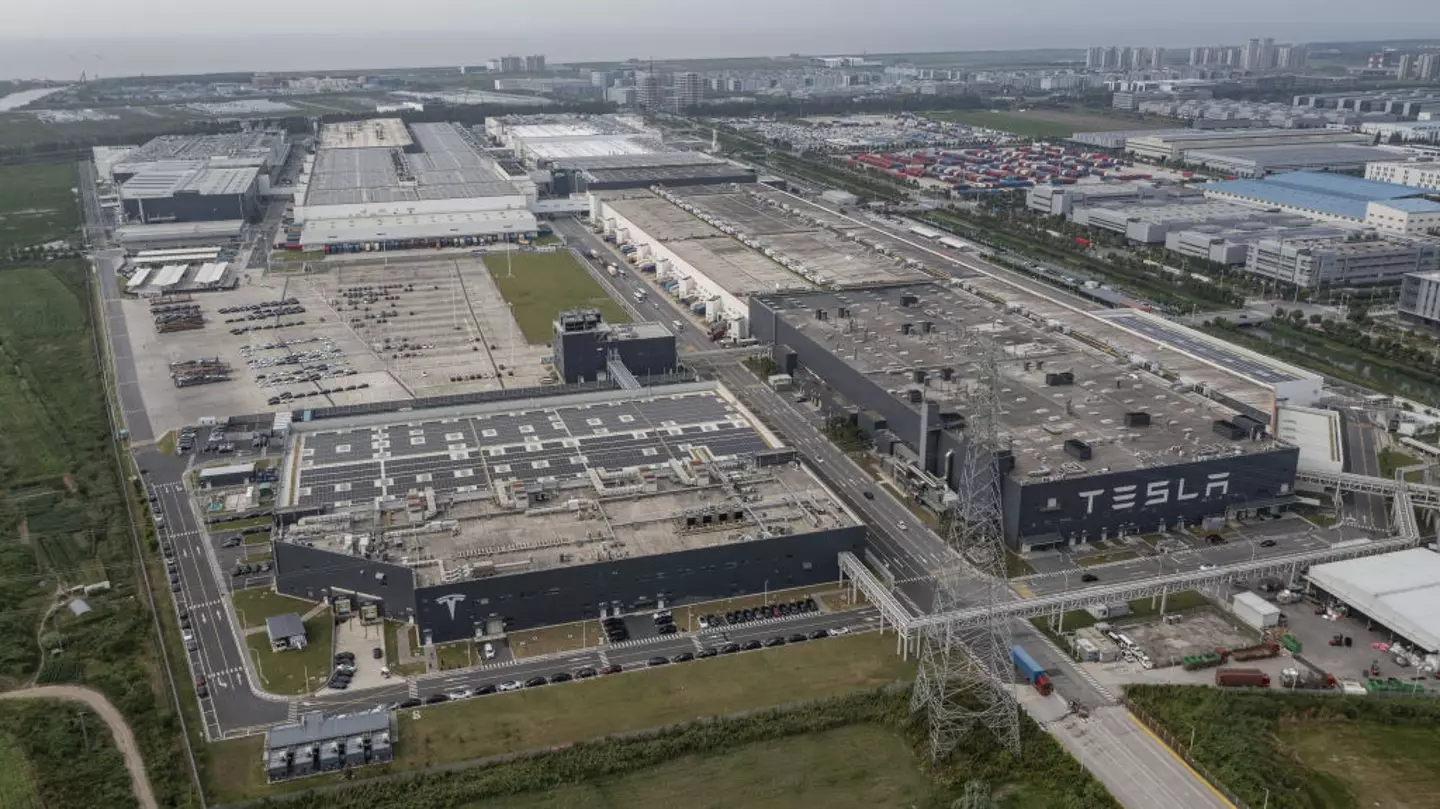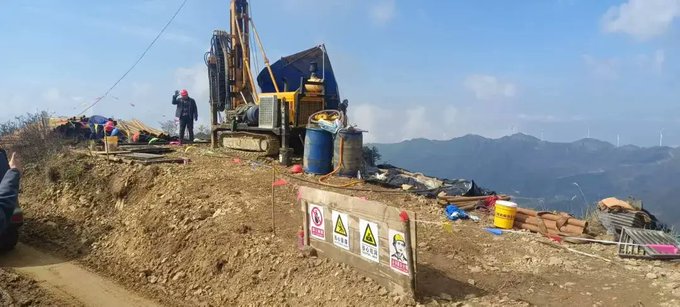Elon Musk is back in the spotlight—though this time, it’s not for a controversial tweet or political endorsement, but because of a massive shift in the global lithium landscape that could redefine Tesla’s future.
2025 has been a bumpy road for Tesla. Production targets are under pressure, investors are skittish, and geopolitical tensions are once again testing the company’s global supply chain. As critics urge Musk to put politics aside, the Tesla CEO seems to be doing just that—publicly vowing to focus on scaling electric vehicle production, fortifying supply chains, and pushing forward with innovations like the upcoming Robotaxi platform.
But even as Musk steers Tesla forward, a newly unearthed discovery in China is threatening to shift the entire EV supply chain beneath his wheels.
🇨🇳 China’s Lithium Jackpot in Hunan Province
In July 2025, China’s provincial authorities confirmed a massive new lithium deposit in the Jijiaoshan mining area of Linwu County, Hunan Province. Estimated at 540 million tons of lithium ore, the deposit could yield around 1.31 million tons of lithium oxide—a staggering boost to China’s resource base.
The ore is composed of an altered granite structure, meaning it’s ideal for hard-rock mining—offering faster processing, lower upfront costs, and more flexible downstream applications compared to traditional brine sources.
This discovery pushes China’s share of global lithium reserves from 6% to 16.5%, making it the second-largest holder globally, behind only Chile. Combine that with China’s control of over 70% of the world’s lithium refining capacity and 76% of global lithium-ion battery production, and it’s clear the country just cemented its dominance in the EV value chain.
![]()
China Science
@ChinaScience
Follow
China, among the world’s largest holders of lithium reserves, has discovered a massive deposit of 490 million tonnes of lithium ore in C Hunan Province, the provincial department of natural resources said Tuesday. The deposit, found in the Jijiaoshan mining area in Linwu County,
https://x.com/ChinaScience/status/1942614661633110286
Where does Tesla source its lithium?


Tesla’s Shanghai Gigafactory could become even more crucial (Bloomberg / Contributor / Getty)
Currently, Tesla relies heavily on its Nevada Gigafactory, which was designed jointly with Panasonic. It sees Panasonic provide critical battery cells, before Tesla integrates them into battery packs.
Still, while Musk’s 2020 Battery Day promised new ways to extract lithium from clay, it’s yet to be proved at a commercial level. In fact, Goldman Sachs suggests that EV battery costs are at record lows and are expected to tumble 40% between 2023 and 2025.
Musk previously invited Argentine President Javier Milei to his Austin Tesla factory to discuss investment opportunities in Argentina’s lithium sector, but now, China is even more of a big dog.
China’s increased market dominance means there’s potential in a further reduction in the costs of making lithium batteries, which in turn could bring prices down across the Tesla supply chain. Then again, Tesla also sources lithium across the USA, which is sure to make President Trump happy, as he wants to make America great again in terms of manufacturing.
China is poised to become even bigger in the EV market, and even though Tesla could happily ride on that train, Trump’s tariffs will undoubtedly see costs rise in some areas, as the lithium discovery could bring them down in others.
🚗 What This Means for Tesla
China’s importance to Tesla is hard to overstate. Nearly half of Tesla’s 1.8 million annual vehicle output comes from its Gigafactory in Shanghai. Now, with China poised to further lower lithium battery production costs, Tesla could benefit—at least in the short term.
Goldman Sachs projects EV battery costs could drop 40% between 2023 and 2025, driven in part by falling lithium prices. That’s good news for Musk’s margins, especially as competition from BYD and other Chinese EV makers intensifies.
However, the growing dependence on Chinese lithium also puts Tesla in a politically precarious position. If former President Donald Trump returns to the White House, he’s expected to enforce heavy tariffs on Chinese imports—a move that could spike costs for Tesla’s U.S.-bound vehicles and components.
🔄 Musk’s Countermove: Domestic Refining and Global Diversification
Musk isn’t standing still. In 2023, Tesla broke ground on a $375 million lithium refinery in Corpus Christi, Texas, designed to process enough lithium for 1 million vehicles annually by 2025. The plant uses a cleaner soda ash method instead of sulfuric acid and qualifies for critical tax credits under the U.S. Inflation Reduction Act (IRA)—which excludes Chinese minerals.
Tesla is also exploring lithium extraction in Nevada, where a potential $1.5 trillion deposit lies beneath a supervolcano. However, Musk’s 2020 “Battery Day” promise of extracting lithium from clay has yet to scale commercially.
Internationally, Musk is looking south. He recently invited Argentine President Javier Milei to tour Tesla’s Austin facility, signaling potential investment in Argentina’s lithium-rich provinces—part of the Lithium Triangle alongside Chile and Bolivia.
⚖️ A Delicate Balancing Act
For now, Musk is walking a tightrope. On one hand, China offers short-term cost advantages and production scale. On the other, U.S. policy under Trump—or any administration focused on de-risking China—demands Tesla onshore more of its supply chain.
Tesla’s strategy appears to be: benefit from China’s efficiency, while quietly investing in alternatives to hedge against tariffs, regulatory hurdles, and reputational risks tied to forced labor in Xinjiang-linked supply chains.
Whether Tesla can pull this off at scale, and fast enough, is the billion-dollar question.
🧭 Looking Ahead
China’s lithium discovery is a game-changer. It promises to reshape global EV production economics and deepen the divide between East and West in the race to electrify transport. For Tesla, it offers both opportunity and risk: a chance to cut costs in the short term, but with greater exposure to geopolitical volatility.
Musk’s next moves—whether in refining, recycling, or reshoring—will determine whether Tesla remains the EV market leader or loses ground in an industry that’s shifting as quickly as its battery chemistry.
TL;DR:
China discovered a 540 million-ton lithium deposit in Hunan, making it the second-largest lithium holder globally.
Tesla’s reliance on Shanghai Gigafactory and Chinese lithium may drive short-term cost savings—but also raises geopolitical risks.
Musk is diversifying with a Texas refinery, Nevada exploration, and Argentina investments.
The EV arms race is heating up, and Tesla is racing to stay ahead of the curve—both politically and technologically.







